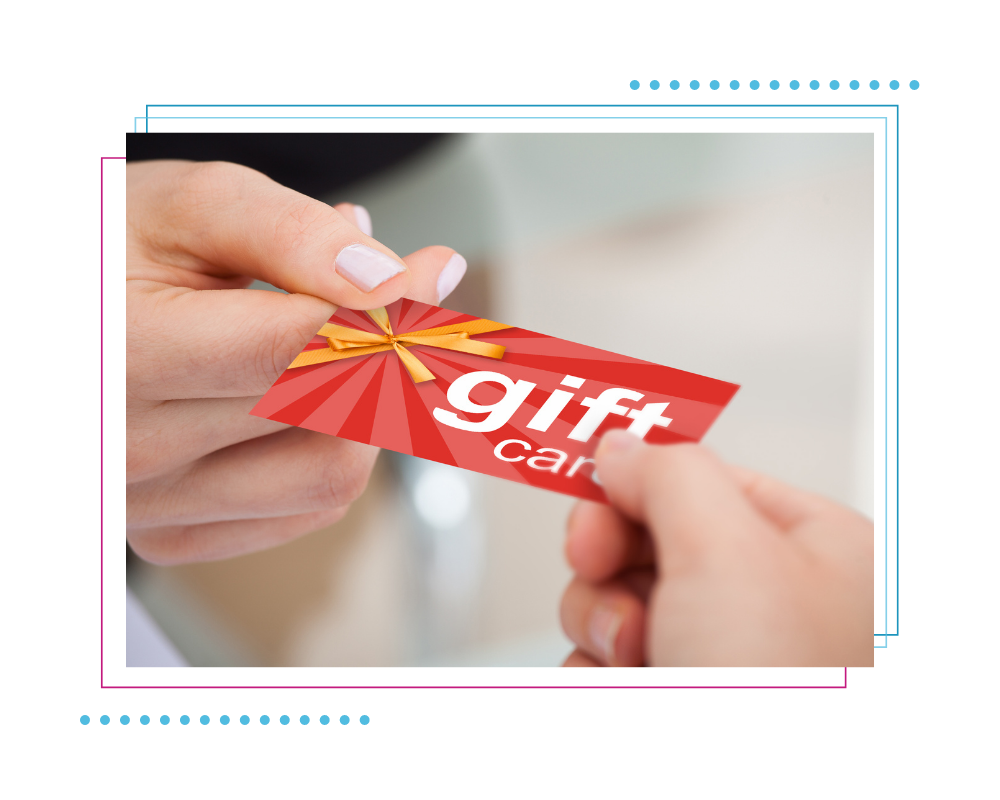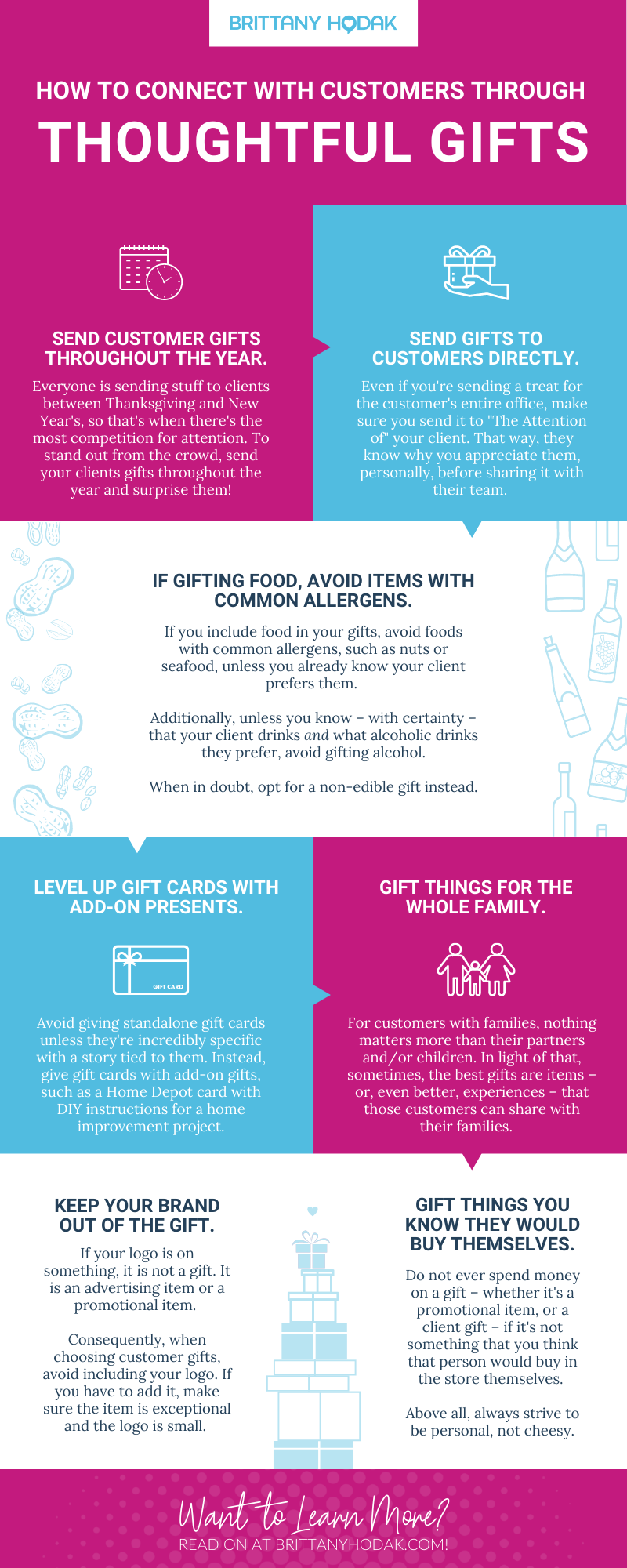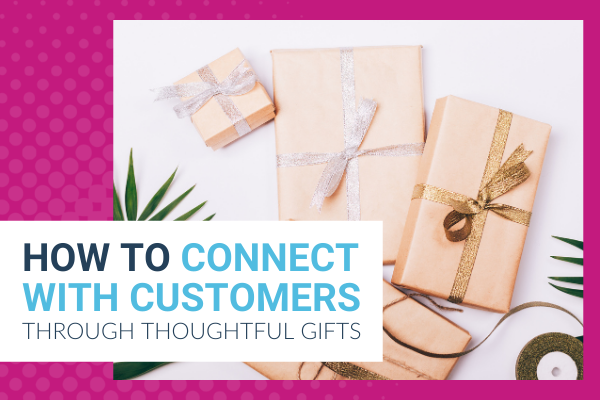Every year, as November comes to an end, more and more companies jump onto the holiday train. From advertisements to holiday cards to holiday carols, re-written to include a corporate brand message, we’ve all seen examples of companies that promoted “giving” in the wrong way. But what about companies that do the opposite and instead use gifts as a way to connect with customers and show they care? That’s what this guide is all about.
Even if you don’t have a deep, personal relationship with a customer, sending a thoughtful gift isn’t just a way to show you appreciate their monetary support. When done well, it’s also a way for you to demonstrate your dedication to them in return. That way, they know you see them as more than a number and that you’ll go above and beyond to show your appreciation.
So, without further ado, let’s get into the details! Below, you’ll find seven tried-and-true steps for how to connect with customers in your own business by giving gifts. You’ll also find a few handy, dandy gifting guides to help you get started with ease, whether you’re a gift-giving novice or a gift-giving fanatic (like me!). 🤗
Send customer gifts throughout the year.
First and foremost, make sure you’re gifting outside of the holiday season. It sounds counterintuitive not to give clients a gift during this time frame – and I’m not saying that you shouldn’t send anything. But, if you think about the average client, receiving attention only around the end of the year is problematic for a few reasons.

For one thing, your company’s likely one of many in their network trying to connect with customers over the holidays. They’re not just getting gifts and attention from you. Everyone else is sending stuff to them between Thanksgiving and New Year’s, too. That means more comparisons between your gift and those of other companies on their radar. It also means more competition for that client’s attention, reducing your potential ROI of gift-giving in the first place.
Additionally, showering customers with attention only around the holidays sends a clear message that you don’t act with their interests in mind year-round. You just do it when you know they’re starting a new year and at the highest risk for switching to one of your competitors.
To avoid giving this impression – and to outshine your competitors’ holiday gifts – find other times to show your appreciation throughout the year. Below are a few much less trafficked holidays along with some gift ideas:
- Valentine’s Day: Customized conversation hearts or heart-shaped candy
- St. Patrick’s Day: Lucky Charms with St. Patrick’s Day themed scratch-off tickets
- Anniversary of Client’s First Purchase: Discount or coupon for a free item or service from your business
- Mother’s or Father’s Day: Pre-paid experience for the family to share together (ex. board or card games or tickets to an upcoming sports game)
Send gifts to customers directly, not their office.
Another way to connect with customers through gifts is to send them to customers directly. If your gifts are intended for each customer’s team to share, it’s tempting to send gifts to “The Office of So-And-So.” After all, if it gets to the office, they’ll see it, right?

Not necessarily. Among small teams, sending a gift to the office as a whole may be fine, as everyone on the team interacts day-in and day-out. However, among large teams, that’s not necessarily true, and a gift may be opened immediately.
One of my friends learned this the hard way after sending “Thank You” cookies to one of her clients earlier this year. Although the cookies arrived at the client’s office without any problem, the box was immediately opened by his receptionist (since it was addressed “To The Office of…”), left in the team break room, and consumed by other team members. All in all, in less than an hour, that gift completely disappeared, and the original intended recipient had no way of knowing it even existed, simply because he wasn’t in his office when it arrived.
To make sure this doesn’t happen with your clients, always send gifts to a specific person. Even if they are intended for the entire team, address the package “To The Attention of [Your Client]”. Then, include a note on the inside, thanking them and their team and expressing your desire to share the gift with everyone that’s been a part of your work together. That way, your client knows you appreciate them, specifically, but the entire team still gets to celebrate together.
Note: For virtual teams, considering there’s no central office, I usually opt for smaller, less expensive gifts mailed individually or gifts solely for the team members I’ve worked with.
If gifting food, avoid items with common allergens.
The third thing to keep in mind, when using gifts to connect with customers, is to be cautious when gifting food. Generally speaking, there are two things I avoid gifting unless I’m certain they’ll be well-received.

The first category is foods with common allergens. In many “Client Gift Ideas” lists, you’ll find suggestions like candy subscriptions, fruit and chocolate arrangements, nut gift tins, or other pre-packaged food sold as gift baskets of sorts. For these items, the idea is that everyone loves free food, so what better gift than that? (A lot, actually, but we’ll get to that shortly).
Aside from food, this attitude also applies to alcohol, the second category I avoid. For these gifts, some common suggestions include beer or wine subscription boxes, alcohol-infused ice cream, or drink-related glassware (beer mugs, shot glasses, etc.).
Nevertheless, in both of these cases, if you are not absolutely positive the client will love your gift, you run the risk of sending them something they can’t enjoy or – even worse – something that will give them an allergic reaction.
Nut gift tins, for example? Delicious for many people but deathly allergic for others.
Booze? Perfect in some cases but highly problematic in others (like if a client doesn’t drink).
In short, if you know a client well enough to be certain of their preferences and allergies, sending food or alcohol can be a thoughtful, fun gift. But, if you don’t – or if your goal is to be able to send the same gift to a long list of customers – opt for non-editable gifts instead.
Level up gift cards with add-on presents.
Another common mistake, aside from gifting food, is always giving gift cards. I’m not saying all gift cards make for bad gifts. But, when a gift card is given without any additional context or personalized attention to the recipient, it almost always comes across as a lack of consideration on the part of the gifter. It’s like putting a price tag on that relationship.

Additionally, in too many cases, the gifter can fall into the trap of choosing cards for businesses they like. Take a gift card for Amazon, for example. Although some people love Amazon, others may prefer to support local businesses. Others may have concerns about Amazon’s warehouse working conditions. And, still, others may dislike Amazon facilities’ extensive use of fossil fuels to ship products.
In short, there’s a minefield of considerations when giving a gift card, any of which can prevent recipients from spending it. In fact, according to a 2018 Statista study, between 2006 and 2018, more than $1 trillion in gift cards was sold. Yet, in that time, unredeemed gift card balances amounted to an estimated $60 billion. That’s a lot of wasted money!
To ensure your gift doesn’t go to waste, give gift cards only in special cases, where you have meaningful stories and intentions behind them. For example, if one of your clients just moved into a new home and you know that they love to garden, a Home Depot gift card is definitely a solid gift. You can also add some extra pizazz by wrapping it up in a cute little flower pot with some garden gloves and a card.
Whatever gift card you choose, remember to make it personal. Make it memorable, so it reflects positively on you and your brand (and so they actually use it).
Keep your brand out of the gift.
The fifth way to connect with customers through gifts is simple: leave your brand out of it. Around the holidays, especially, we’ll all seen the company gifts covered in logos. There are the stress balls, T-shirts, and shot glasses, not to mention the barrage of office supplies that always seem to be included. (No one needs more branded pens – I promise.)

You may be thinking, “But that’s such an easy way to check off everyone on my gift list in one shot.” And you’re right – it is easy. However, in these cases, because it’s branded as your company, the gift is about your brand, not the person receiving it. Regardless of the exact present, if your logo is on something, it is not a gift. It is an advertising or promotional item.
Looking at your personal life, think about giving gifts to your friends and family. Would you buy a birthday present, then write your name across it before giving it to your friend? No. Would you buy a Valentine’s Day present for your partner, then plaster your name on it? Definitely no. Those actions make it all about you, and that’s the opposite goal of a gift.
In the best-case scenario, choose customer gifts that are logo-free. If you absolutely have to include a logo, make the image small and subtle. Then, add it to a practical gift, so they think of you every time they use it.
Plus, if you can make a gift look cute, like something people would pay money for, they’re not only more likely to use it but also to share it. So, you’re getting an even greater ROI because even more people are going to see it. Win, win!
Gift things you know customers would buy for themselves.
Similarly, the sixth thing to remember, when using gifts to connect with customers, is to focus on what the customer wants.
Like giving gift cards, it can be easy to slip into the thought, “Well, I think this is great, so they will, too!” Nevertheless, that’s not always the case, and a better strategy is to put yourself in each gift recipient’s shoes. Then, ask yourself, “What would they be excited to use?” and “What relates to the needs or hobbies they’ve mentioned to me in the past?” The goal is to avoid gifts that are going to go unused or look cheesy (or cheap).

If you’re struggling to pin down a meaningful gift idea, here are a few things to consider.
- Hobbies: Are they big on travel? Gardening? Reading? Whatever their passions, gift something that lets them enjoy that aspect of their life outside of work.
- Job Position: What tools do they use on a daily basis that could be improved? Maybe it’s a mug warmer for someone who works in an office or hand warmers for someone that works outdoors.
- Personality: If you’re choosing something they can use, think about their style. Do they prefer bright or muted colors? Sequins or simplicity? Cliches or uniqueness? What’s their sense of humor like? All of these details can make a simple gift, like a mug, come across as personal.
Essentially, do not ever spend money on a gift – whether it’s promotional or not – if it’s not something that person would buy themselves. Obviously, sometimes gifts are things that people wouldn’t splurge on. But, setting those aside, look for things you’re certain customers would be excited to receive and use.
Gift items – or, even better, experiences – for the whole family.
Last but not least, if you want to connect with customers through gifts, keep in mind what matters most to them: their friends and family!

Gifting with your clients in mind is awesome – no doubt about it. But, if you can make those clients look like a hero to their kids and/or their partners, you’ll win brownie points not just at the office but when they go home, too.
For instance, in Giftology, written by my friend John Ruhlin, Ruhlin mentions that on Mother’s or Father’s Day, each mom or dad on his team gets their car detailed. Is his words, “What I soon realized is that when you make it about the other person, they don’t forget where it came from… they know that it came from me or it came from XYZ accounting firm, and so, by making it all about the recipient, you actually get a double win. They value it more, their family values it more, they use it more often proudly, it doesn’t look tacky.”
With that in mind, the next time you want to further connect with customers through gift-giving, remember to start with them. Focus on their likes and dislikes, their personal passions, and their families. After all, as long as you choose a gift with those in mind, it’s sure to be a slam dunk. 👌
For more information about choosing customer – or employee – gifts, visit my free Resources Library, and download my gifting guide.

